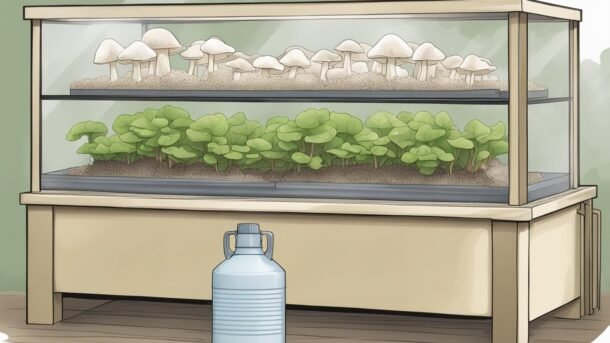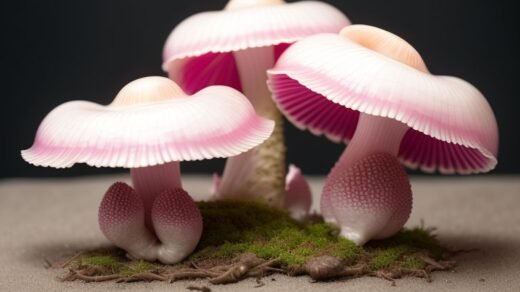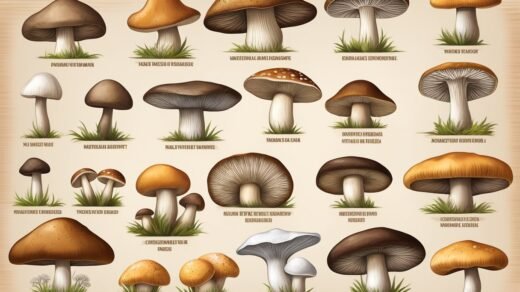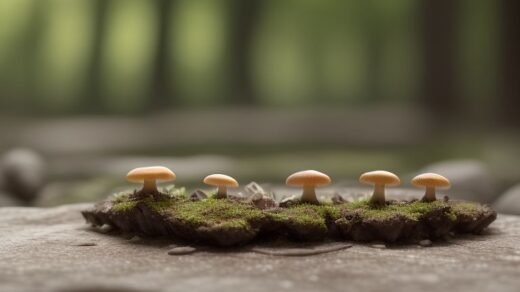King oyster mushrooms are a popular variety of mushrooms that are known for their meaty texture and delicious flavor. They are easy to grow and can be grown indoors or outdoors, making them a great option for anyone who wants to start growing their own mushrooms.
To grow king oyster mushrooms, you will need to start by creating a suitable growing environment. This will involve choosing the right substrate, which is the material that the mushrooms will grow on, as well as providing the right temperature and humidity levels. You will also need to choose the right strain of mushroom, as different strains may have different growing requirements.
Once you have set up your growing environment, you will need to inoculate the substrate with mushroom spores or spawn. This will involve mixing the spores or spawn with the substrate and then allowing it to colonize for a period of time. After this, you will need to provide the right conditions for fruiting, which will involve maintaining the right temperature, humidity, and light levels. With a little patience and care, you should be able to harvest a bountiful crop of king oyster mushrooms in no time.
Understanding King Oyster Mushrooms

Species Overview
King oyster mushrooms, scientifically known as Pleurotus eryngii, are a type of edible mushroom that belong to the Pleurotaceae family. They are also known as king trumpet mushrooms, French horn mushrooms, and king brown mushrooms. King oyster mushrooms have a thick, meaty stem and a small cap, and are native to the Mediterranean region, Middle East, and parts of Asia.
King oyster mushrooms are highly valued for their meaty texture and rich, umami flavor. They are commonly used in Asian cuisine, particularly in Chinese, Japanese, and Korean dishes. They can be cooked in a variety of ways, including grilling, roasting, sautéing, and stir-frying.
Nutritional Benefits
King oyster mushrooms are not only delicious, but also highly nutritious. They are low in calories and fat, and are a good source of protein, fiber, vitamins, and minerals. They are particularly rich in potassium, phosphorus, and copper, and contain significant amounts of vitamin B3, vitamin B5, and vitamin B6.
King oyster mushrooms are also rich in antioxidants, which can help protect the body against oxidative stress and inflammation. They have been shown to have anti-inflammatory and immune-boosting properties, and may help reduce the risk of chronic diseases such as cancer, heart disease, and diabetes.
Overall, king oyster mushrooms are a healthy and delicious addition to any diet. They are easy to grow at home, and can be used in a variety of dishes to add flavor, texture, and nutrition.
Cultivation Requirements

Substrate Preparation
King oyster mushrooms require specific substrate preferences that are key to their successful cultivation. A substrate, in mushroom growing terms, is the material on which the mushrooms obtain nutrients and grow. Hardwood-based substrates are preferred by king oyster mushrooms, and they can be grown on a variety of hardwoods, including oak, beech, and maple. The substrate should be chopped into small pieces and sterilized before use to prevent contamination by other fungi or bacteria.
Environmental Conditions
King oyster mushrooms have specific cultivation requirements that must be met to ensure a successful harvest. They prefer a cooler temperature range of 50-70°F (10-21°C) and thrive best on hardwood-based substrates. These mushrooms require a relative humidity (RH) level of around 80-90% during the initial stages of growth. This high humidity is necessary for the mycelium to colonize the substrate and start forming fruiting bodies. Once the mushrooms start to form, the humidity should be lowered to around 70-80% to prevent excessive moisture buildup, which can lead to bacterial contamination.
In addition to temperature and humidity, king oyster mushrooms require proper ventilation to ensure a healthy crop. Fresh air exchange is essential for the growth of these mushrooms, and it can be achieved through the use of fans or by opening windows in the growing area. Adequate lighting is also necessary for the growth of king oyster mushrooms. They require low to medium light levels, and natural sunlight or fluorescent lighting can be used to provide the necessary light.
Overall, successful cultivation of king oyster mushrooms requires attention to detail and adherence to specific environmental conditions. By following these guidelines, growers can ensure a healthy and productive crop of these delicious mushrooms.
Inoculation Process
King oyster mushrooms are grown from spawn, which is the vegetative growth or mycelium of the mushroom. The inoculation process involves introducing the spawn to a substrate, which is the material that the mushrooms will grow on. Here are the steps for the inoculation process:
Spawn Selection
Selecting the right spawn is crucial for the success of the growing process. King oyster mushrooms can be grown from grain spawn or sawdust spawn. Grain spawn is made from sterilized grains that have been inoculated with the mushroom mycelium. Sawdust spawn is made from sterilized sawdust that has been inoculated with the mushroom mycelium.
When selecting spawn, it is important to choose a reputable supplier that provides high-quality spawn. The spawn should be fresh, healthy, and free from contaminants. It is also important to choose spawn that is compatible with the substrate that will be used.
Sterilization Techniques
Sterilization is an important step in the inoculation process because it ensures that the substrate is free from contaminants that can compete with the mushroom mycelium. There are several sterilization techniques that can be used, including:
- Pressure cooking: This involves placing the substrate in a pressure cooker and heating it to a high temperature for a certain amount of time. This kills any bacteria or fungi that may be present.
- Boiling: This involves boiling the substrate in a pot of water for a certain amount of time. This is a less effective method than pressure cooking, but it can still be effective for some substrates.
- Chemical sterilization: This involves using chemicals such as hydrogen peroxide or bleach to sterilize the substrate. This method is not recommended for edible mushrooms because it can leave harmful residues.
It is important to follow the sterilization instructions carefully to ensure that the substrate is properly sterilized. Once the substrate has been sterilized, it should be allowed to cool before inoculation.
By following these steps for the inoculation process, growers can increase their chances of success in growing king oyster mushrooms.
Incubation and Growth
King oyster mushrooms require specific conditions for proper incubation and growth. Here are some key factors to consider:
Monitoring Growth
During the incubation period, it is important to monitor the growth of the mycelium. This can be done by observing the substrate and looking for signs of colonization. The mycelium should grow evenly throughout the substrate, and any areas that appear discolored or contaminated should be removed immediately to prevent the spread of contaminants.
Managing Contaminants
Contamination is a common problem when growing mushrooms, and it can lead to poor yields or complete crop failure. To prevent contamination, it is important to maintain a clean and sterile environment throughout the entire growing process. This includes using clean equipment, washing hands thoroughly before handling the substrate, and sterilizing the substrate before inoculation.
If contamination does occur, it is important to act quickly to prevent the spread of contaminants. This can be done by removing any contaminated substrate and sterilizing the surrounding area. It may also be necessary to start the growing process over with fresh substrate and spawn.
By following these tips for incubation and growth, growers can increase their chances of a successful harvest of king oyster mushrooms.
Harvesting and Storage
Harvesting Techniques
When it comes to harvesting king oyster mushrooms, there are a few techniques to keep in mind. The first step is to wait until the mushroom caps have fully expanded and the edges begin to curl upwards. This indicates that the mushrooms are ready to be harvested.
One common technique is to gently twist and pull the mushroom stem at the base, being careful not to damage the surrounding substrate. Another technique is to use a sharp knife to cut the stem just above the substrate. Both methods are effective, and it ultimately comes down to personal preference.
Post-Harvest Handling
After harvesting, it’s important to handle the mushrooms with care to ensure maximum freshness and quality. King oyster mushrooms are best stored in a paper bag or wrapped in a paper towel and placed in the refrigerator. Avoid storing them in plastic bags, as this can cause excess moisture and lead to spoilage.
King oyster mushrooms can last up to a week in the refrigerator, but it’s best to use them as soon as possible for optimal flavor and texture. If you have excess mushrooms, they can also be frozen for later use. Simply slice and blanch the mushrooms for 2-3 minutes, then transfer to a freezer-safe container or bag and freeze for up to 6 months.
By following these harvesting and storage techniques, you can enjoy fresh and flavorful king oyster mushrooms for a variety of culinary applications.




